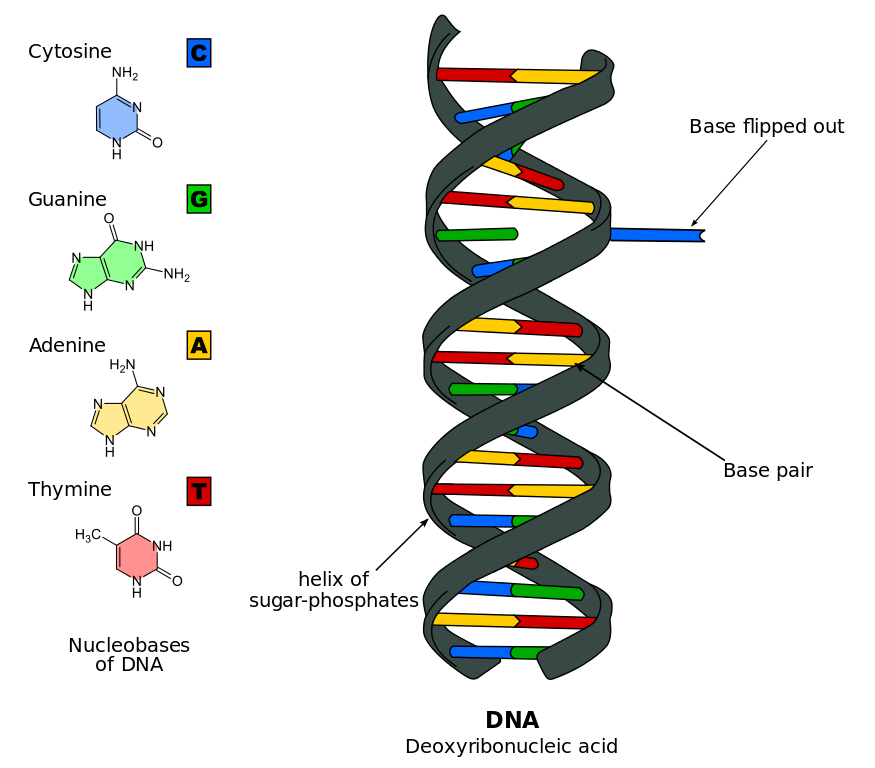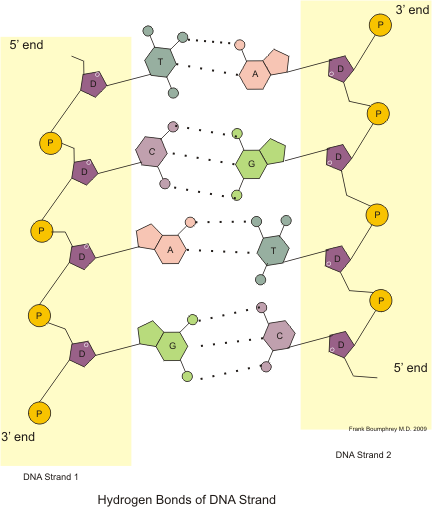Nitrogenous Base
ScienceTopping | Oct 4, 2021
 Adenine, thymine and uracil are purines; guanine and cytosine are pyrimidines.
Nitrogenous base is an organic molecule that contains the element nitrogen, N and functions as a base in chemical reactions.
There are two main types of nitrogenous bases, which are
Adenine, thymine and uracil are purines; guanine and cytosine are pyrimidines.
Nitrogenous base is an organic molecule that contains the element nitrogen, N and functions as a base in chemical reactions.
There are two main types of nitrogenous bases, which are
Purines are nitrogenous bases with two rings in their chemical structures, while pyrimidines are those with one ring. This indicates that purines have
larger molecular size compared to pyrimidines.
Up to this point, it's time to look at the actual nitrogenous bases.
How many are there?
There are five nitrogenous bases, namely adenine (A), thymine (T), guanine (G), cytosine (C) and
uracil (U). Adenine, thymine and uracil belong to the group of purines, while guanine and cytosine are pyrimidines. Here comes
the most significant part that must be memorised — the pairing system. In general review, purines pair with their
complementary pyrimidines. More specifically, adenine pairs with thymine or uracil, while guanine pairs with cytosine. Always
bear in mind that thymine is the substitute of uracil and vice versa. Thymine only presents in DNA, and uracil substitutes
thymine in RNA. This is one of the major differences between DNA and RNA.
After
understanding the pairing system, the number of chemical bonds formed by each base is another important point. Adenine forms
two chemical bonds with thymine in DNA and uracil in RNA; Guanine forms three chemical bonds with cytosine. Do you still
remember the chemical bonds formed between two nitrogenous bases in DNA? The chemical bonds are hydrogen bonds.
 In DNA, adenine forms two H bonds with thymine; guanine forms three H bonds with cytosine.
Nitrogenous base is just one of the three components in DNA and RNA. DNA and RNA are made up of three main components, which
are phosphate group, sugar and nitrogenous bases.
The chemical formula of each nitrogenous base is as follows.
In DNA, adenine forms two H bonds with thymine; guanine forms three H bonds with cytosine.
Nitrogenous base is just one of the three components in DNA and RNA. DNA and RNA are made up of three main components, which
are phosphate group, sugar and nitrogenous bases.
The chemical formula of each nitrogenous base is as follows.
| Nitrogenous Base |
Chemical Formula |
| Adenine |
C5H5N5 |
| Thymine |
C5H6N2O2 |
| Uracil |
C4H4N4O2 |
| Guanine |
C5H5N5O |
| Cytosine |
C4H5N3O |
To sum up, always have this formula in mind, A–T or A–U and G–C, whereby A pairs with T or U, while G pairs with C. With
that, adenine is the complementary base of thymine or uracil, while guanine is the complementary base of cytosine.
 IMAGE BY Magladem96, CC BY-SA 3.0/WIKIMEDIA COMMONS
IMAGE BY Magladem96, CC BY-SA 3.0/WIKIMEDIA COMMONS



